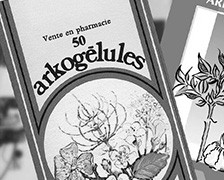Find in our documents the properties and benefits of the plants. These properties are recognized for specific uses and dosages of the active constituents contained in these plants. Their use should always be accompanied by the advice of a healthcare professional.


Plant Use
For over 3,000 years, Ashwagandha has been a key plant in Indian medicine, particularly in Ayurveda. Classified as a "rasayana," it is recognized in these traditions as a physical and mental tonic, rejuvenating energy, strength, and endurance, while helping to manage stress and emotions. It is thus referenced as an adaptogen by several authors. This plant has been the subject of numerous publications, recent clinical studies, and several reviews of studies and uses.
The main properties of Ashwagandha include:
- Maintenance of physical tone, as well as nervous, mental, and cognitive well-being.


Scientific Overview
Often referred to as "Indian ginseng," this adaptogenic plant is making headlines. A broad-spectrum extract of phytoactive compounds has been the focus of 25 clinical studies, demonstrating its properties in maintaining physical tone and well-being in cases of temporary stress and fatigue. These studies show its positive effects on cognitive activities, such as memory. In cases of physical, mental, or emotional overstrain, it helps to manage stress better, restores energy, and promotes calm and well-being.
Botanical Description
Withania somnifera (L.) Dunal is a perennial plant belonging to the Solanaceae family, which also includes plants like physalis and tomatoes. Native to India, this plant thrives in dry, sunny environments. Ashwagandha forms a bush about 1 meter tall, with oval, entire, slightly hairy leaves, and produces small yellow-green flowers attached to the stem. The fruits are orange-red berries protected by the dried calyx (similar to physalis). The root is the part of the plant that is of interest. Depending on the cultivation method, it can be harvested as early as the first year when the plant enters winter dormancy and the roots are filled with reserves.

Bibliographic References
- Chandrasekhar K et al. "A prospective, randomized double-blind, placebo-controlled study of safety and efficacy of a high-concentration full-spectrum extract of ashwagandha root in reducing stress and anxiety in adults." Indian J Psychol Med. 2012 Jul;34(3):255-62.
- Health Canada Monograph, Natural Health Product. Ashwagandha – Withania somnifera. 2019.
- Tandon N, Yadav SS. "Safety and clinical effectiveness of Withania somnifera (Linn.) Dunal root in human ailments." J Ethnopharmacol. 2020 Jun 12;255:112768.
- Upton R. Ashwagandha Root. American Herbal Pharmacopoeia and Therapeutic Compendium, 2000.
- WHO. "Radix Withaniae." In: WHO Monographs on Selected Medicinal Plants, Volume 4. Geneva: World Health Organization, 2009. pp. 373-391.




